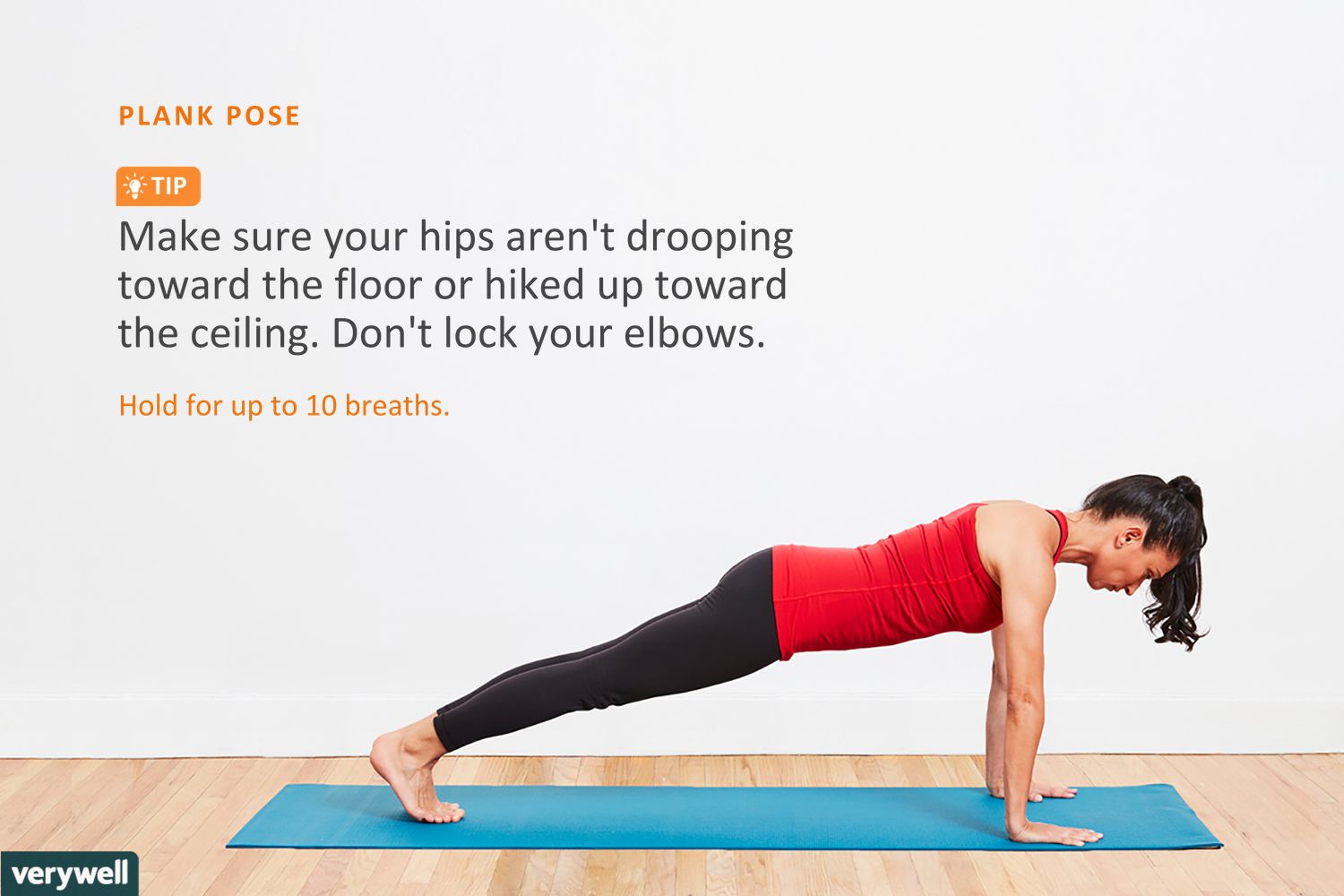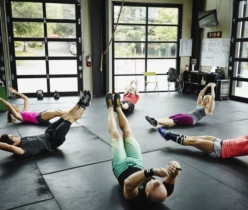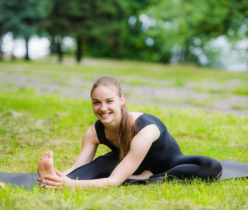Also Known As: Hover exercise, front plank
Targets: Abdominals and core muscles
The plank is an excellent abdominal and core exercise. It works not only the rectus abdominis, but also the other ab muscles and the core muscles that run from the pelvis along the spine and up to the shoulder girdle. To ensure you keep your core strong and stable, add the plank to your ab workout program.
Benefits
Strengthening the core is an important aspect of any workout program. Not only does a strong and solid core look good, but more importantly, it helps to stabilize, balance, and power the body during just about every other activity. Core strength is the basis for all coordinated and powerful athletic movements. A strong core can reduce stress on the joints and allow you to achieve better posture. The plank exercise can be used as the basis for a core muscle strength and stability test. The plank is more of a strength-building exercise than a cardio exercise, but by engaging a range of muscles it does boost your calorie burn a bit. How many calories burned depends on your weight and how long you hold the plank. Typically, a 150-pound individual will burn about 3 calories a minute holding a plank.
Watch Now: Perform the Plank Exercise to Improve Core Strength
Step-by-Step Instructions
Select a place where you can extend your whole body length. Using an exercise mat will give you enough padding to be comfortable on all fours.
- Begin in the plank position, face down with your forearms and toes on the floor. Your elbows are directly under your shoulders and your forearms are facing forward. Your head is relaxed and you should be looking at the floor.
- Engage your abdominal muscles, drawing your navel toward your spine. Keep your torso straight and rigid and your body in a straight line from ears to toes with no sagging or bending. This is the neutral spine position. Ensure your shoulders are down, not creeping up toward your ears. Your heels should be over the balls of your feet.
- Hold this position for 10 seconds. Release to floor.
- Over time work up to 30, 45, or 60 seconds.
Common Mistakes
Avoid these errors to get the most out of this exercise and to avoid strain or injury.
Arching Your Back
If you arch your back you are not engaging your abdominals sufficiently and you are putting more of the weight onto your arms. Check to be sure you are keeping your shoulders down and wide.
Sagging Hips
Your hips will start sinking once your abs have reached their fatigue limit. That’s a sign it’s time to end your plank. If it seems your hips are sagging from the beginning, try separating your feet a bit wider and focus on engaging your abs.
Tilting Head Up
Your neck should be in line with your body, not tilted up, which could strain the neck. Keep your gaze down at the floor.
Modifications and Variations
There are several variations of the plank that further work the core muscles to build strength and stability. As well, there are ways to modify it if you are a beginner.
Need a Modification?
If you find the plank difficult at first, try doing it with knees bent, taking the pressure off of your feet. You could also do an incline plank with forearms resting on a bench.
Up for a Challenge?
Try these variations to change up your plank.
In order to perform a plank with a leg lift, start in the same plank position as above with your forearms and toes on the floor.
- Slowly raise one leg 5 to 8 inches off the floor
- Count to two and slowly lower your leg to the floor.
- Switch legs and repeat.
- Do two to three sets of 10 reps.
To make this exercise a bit easier, you can perform the movement on your hands rather than your elbows.
Another way to add variety to the basic plank is to add an arm lift. To perform a planl with an arm lift, follow these steps:
- Start in the same plank position as above.
- Carefully shift your weight to your right forearm.
- Extend your left arm straight out in front of you.
- Hold for three seconds while keeping your core tight.
- Slowly bring your arm back to starting position.
- Switch arms and repeat.
- Do two to three sets of 10 reps.
Rather than doing a single plank for 30 seconds or more, some exercise routines say there are good benefits for doing a 10- to 15-second plank, resting for 30 seconds, and doing three to five sets. Your total time spent in the plank in an exercise session should be 60 seconds or less.
Safety and Precautions
You should not do planks if you have a shoulder injury. If you feel shoulder pain, end the exercise. In pregnancy, there is a concern for placing stress on the abdominal wall. It may be best to modify the plank and do a side plank or an incline plank. Talk to your doctor or physical therapist to see if this is an appropriate exercise.
Try It Out
Incorporate this move and similar ones into one of these popular workouts:



